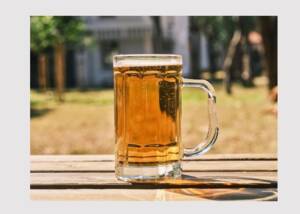Decaffeinated coffee: This is how the caffeine is removed from the coffee
News News blog
Coffee is one of the most popular beverages worldwide. However, not everyone tolerates the caffeine it contains equally well. For them, there is decaffeinated coffee. But how exactly is the caffeine removed from the coffee? Here's an overview of the most common decaffeination processes.

Caffeine is an alkaloid that has a stimulating effect on the human body. It increases concentration and alertness, but can also lead to nervousness, restlessness, and sleep disorders. Some people are more sensitive to caffeine. For them, decaffeinated coffee is a good alternative to enjoy the benefits of coffee without the side effects. Even in the evening, one can drink a cup of decaffeinated coffee without worrying about falling asleep.
The Decaffeination Processes
Decaffeination takes place already with the raw, unroasted coffee beans. The goal is to remove as much caffeine as possible while preserving the remaining flavor-giving ingredients. Various methods are used for this purpose:
- In the Swiss Water Process, the beans are treated only with hot water and activated carbon filters. It is a purely physical process without chemicals.
- In the direct method, the beans are soaked in dichloromethane or ethyl acetate for several hours after pretreatment with steam. These solvents extract the caffeine from the beans.
- The indirect method works similarly, except that here, all water-soluble substances are first extracted from the beans. The caffeine is then extracted from the resulting solution.
- In the CO2 process, supercritical carbon dioxide is passed through the beans under high pressure. It gently extracts the caffeine from them.
- In the triglyceride process, hot coffee bean oils are used, which bind the caffeine to themselves.
Residual Content and Taste
Even decaffeinated coffee is not completely caffeine-free. In the EU, it may contain up to 0.1% residual content. This corresponds to about 3-15 mg of caffeine per cup, significantly less than regular coffee with about 85 mg.
In terms of taste, caffeine-free coffee often performs slightly worse than regular varieties in tests. The reason is the unavoidable loss of other ingredients during decaffeination. Nevertheless, there are now very good qualities where most coffee drinkers hardly notice a difference.










